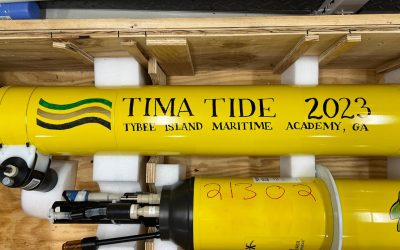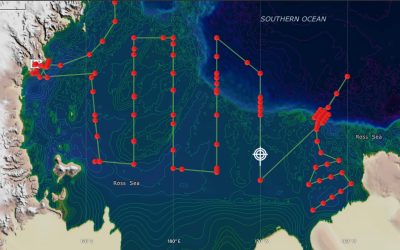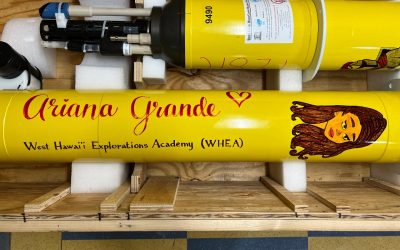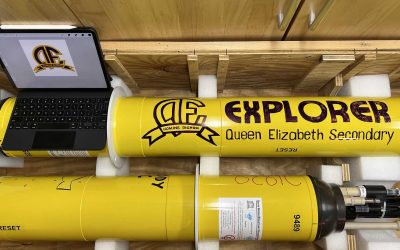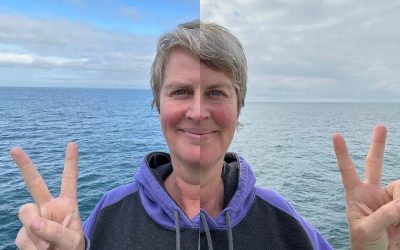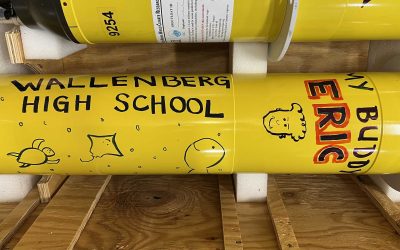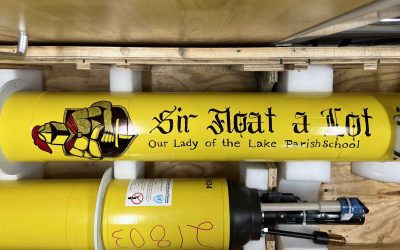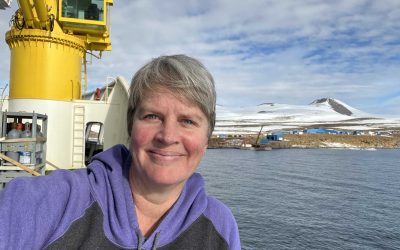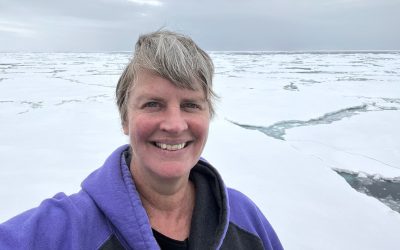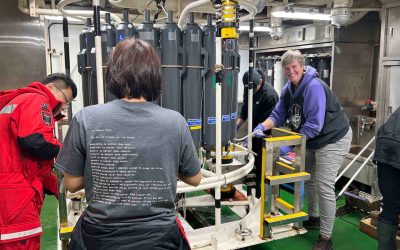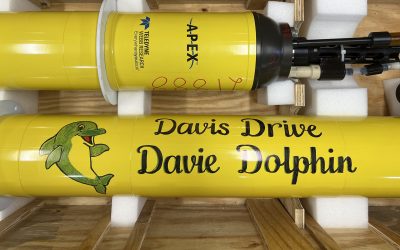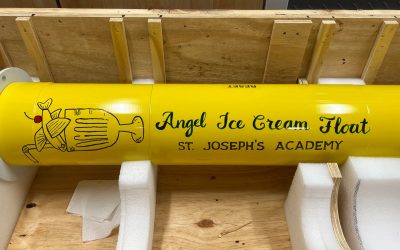SOLOMON: Southern Ocean Long-term Observation and MONitoring
SOCCOM & GO-BGC Deployment in the Southern Ocean
SOLOMON: Southern Ocean Long-term Observation and MONitoring
SOCCOM & GO-BGC Deployment in the Southern Ocean
January 06 – February 18, 2023
GO-BGC
The Global Ocean Biogeochemistry Array (GO-BGC) is a project funded by the US National Science Foundation to build and deploy a global network of chemical and biological sensors that will monitor ocean health. This new network of floats will collect data on the chemistry and the biology of the ocean from the surface to a depth of 2,000 meters, and will allow scientists to pursue fundamental questions concerning ocean ecosystems, observe ocean health and productivity, and monitor the elemental cycles of carbon, oxygen, and nitrogen in the ocean through all seasons of the year.
SOCCOM
The Southern Ocean Carbon and Climate Observations and Modeling project (SOCCOM) is an NSF-sponsored program focused on understanding the influence of the Southern Ocean on climate, including a major program to observe carbon processes in the Southern Ocean. Over the last 9 years SOCCOM has built an observing system for carbon, nutrients, and oxygen throughout the Southern Ocean, using profiling floats with biogeochemical sensors. This robotic float observing system is complemented by shipboard measurements during float deployments to the extent possible.
Biogeochemical Floats
These floats spend their lives drifting through the ocean, changing depth and collecting data at programmed intervals. The floats are battery-powered and host a suite of chemical and optical sensors. Every 10 days, they automatically ascend to the sea surface, taking a variety of measurements through the water column. Data are reported via satellite every time the float reaches the surface. They have enough batteries to last for about 200 to 300 profiles, so they will be able to collect data for approximately 3-4 years if all goes well.
ARAON – Korean Research Icebreaker
This expedition will be hosted by the IBRV Araon—Korea’s first icebreaking research vessel. Built in 2009 and operated by the Korea Polar Research Institute (KOPRI), IBRV Araon was designed to conduct independent polar research in the frozen waters of the Arctic and Antarctic, as well as supply and personnel transportation to Southern Ocean and Arctic bases. Since 2021, KOPRI has been implementing a polar infrastructure joint utilization system to expand the base of polar research. Through this initiative, the float programs were able to secure enough shiptime to deploy 10 floats and take measurements that support the floats just before they are deployed. Our current plan is to deploy five floats in the open ocean along the transit and five in the shallower shelf waters of the Ross Sea.

Korean Icebreaking Vessel Araon. Image credit: KOPRI
SOLOMON: Southern Ocean Long-term Observation and MONitoring
Because the SOCCOM & GO-BGC programs have little shiptime of their own, floats are deployed from ships of opportunity from many different countries. As a result, every cruise has had a different purpose. The goal of the SOLOMON expedition is to understand the current status of heat and carbon uptake capacity in the West Antarctic region and investigate the variability of material cycles and marine ecosystem response. The science team will be collecting samples and making observations such as:
- Assessment of heat transport chance and carbon uptake evolution in the Southern Ocean
- Variability of biogeochemical cycles in the Southern Ocean coastal region under shrinking cryosphere (global warming)
- Detect biological production change and tracing marine ecosystem response
Station Plan
The sampling plan for the SOLOMON 2023 expedition includes measurements of temperature, salinity, pCO2, and some other biological and chemical components during the transit from Christchurch to the Ross Sea, and biological and chemical water sampling in the polynyas and continental shelf waters of the Ross Sea.
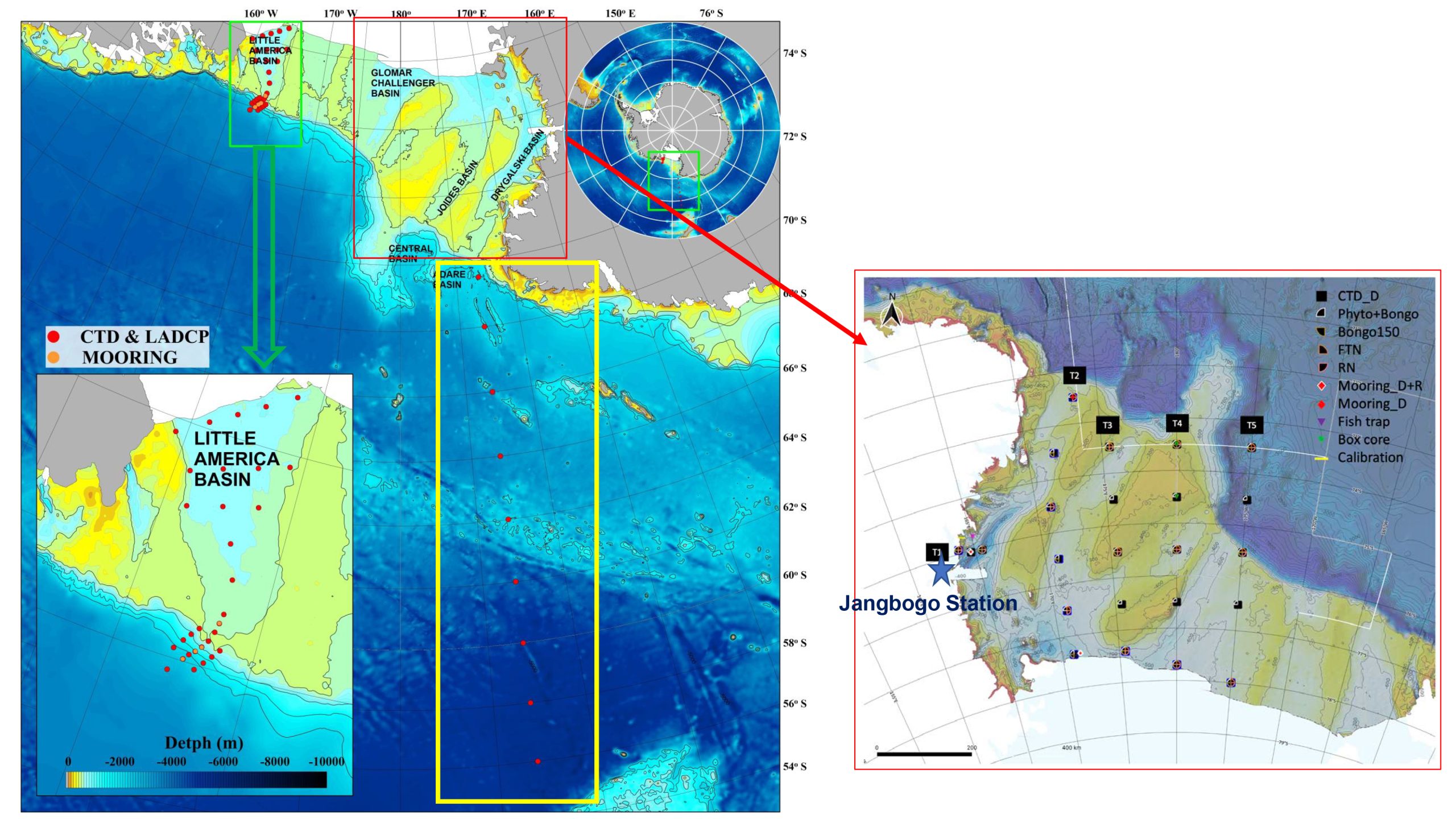
IBRV Araon SOCCOM & GO-BGC Southern Ocean Expedition Log
TIMA Tide
Our tenth and final float, TIMA Tide 2023, has been deployed TIMA Tide 2023— Tybee Island Maritime Academy in Tybee Island, GA Location: 162° 17.7765’ W; 77° 23.8915’ S Time: Mon 06 FEB 2023 12:37 UTC Temperature: -3.2°C, Wind 24 kts SW Float Number: 21888 Float...
Daily
Biogeochemical sampling in the Ross Sea. Connecting the Dots During this leg of the expedition, we have been moving through a number of sampling stations in the Ross Sea, kind of like the switchbacks of a ride line-up at an amusement park (or more like a giant...
Ariana Grande
Our ninth float, Ariana Grande, has been deployed Ariana Grande— West Hawai'i Explorations Academy (WHEA) in Kona, HI Location: 169° 59.8048’ W; 77° 47.9938’ S Time: Wed 01 FEB 2023 07:34 UTC Temperature: -2.2°C, Wind 22 kts WNW Float Number: 21803 Float Type:...
QE Explorer
Our eighth float, QE Explorer, has been deployed. QE Explorer — Queen Elizabeth Secondary in Surrey, BC, Canada Location: 175° 0.3588’ W; 76° 30.0’ S Time: Fri 29 JAN 2023 14:00 UTC Temperature: -1.2°C, Wind 16 kts W Float Number: 20572 Float Type: Apex...
Halfway
Sailing on the edge of yesterday along the International Date Line Between Hemispheres International Date During the last leg of our expedition, our research path took us right along the 180° line of longitude: the seam between the eastern and western...
My Buddy Eric
Our seventh float, My Buddy Eric, has been deployed My Buddy Eric— Wallenberg High School in San Francisco, CA. Location: 179° 59.7197’ E; 74° 54.0507’ S Time: Fri 27 JAN 2023 10:17 UTC Temperature: -1.6°C, Wind 18 kts SSE Float Number: 21838 Float Type: Apex...
Sir Float a Lot
Our sixth float, Sir Float a Lot, has been deployed Sir Float a Lot— Our Lady of the Lake Parish School in Seattle, WA Location: 175° 29.6493’ E; 74° 54.0741’ S Time: Thu 26 JAN 2023 00:15 UTC Float Number: 21871 Float Type: Apex Float Program: SOCCOM This float...
Jang Bogo
Bad weather brings disappointment at Jang Bogo Station Visiting Jang Bogo Station Arrival We arrived at Jang Bogo Station in the late hours of January 19, local time. I was excited to be so close to the continent and see the station, so I stayed up to check it...
Sea Ice
Crossing the Antarctic Circle into the Zone of Sea Ice. Frozen Seas Ice Ahead As I was preparing to go to bed one night, I began to hear some loud crashes and bangs against the hull. Then more screeches and scrapes. On the other side of the wall from my cabin is...
Sampling
Water samples are taken at each float station to compare with the data sent back by the floats Testing the Waters CTD—Conductivity, Temperature, and Depth Each time a float is deployed, every effort is made to sample the water at the same location in order to...
Davie Dolphin
Our fifth float, Davis Drive Davie Dolphin, has been deployed Davis Drive Davie Dolphin—Davis Drive Elementary in Cary, NC Location: 160° 59.2561’ E; 63° 59.9108’ S Time: Sat 14 JAN 2023. 21:05 UTC Float Number: 20302 Float Type: Apex Float Program: GO-BGC This...
Angel Ice Cream Float
Our fourth float, Angel Ice Cream Float, has been deployed Angel Ice Cream Float—St. Joseph's Academy in St. Louis, MO Location: 160° 59.3179’ E; 62° 0.0215’ S Time: Sat 14 JAN 2023. 12:30 UTC Float Number: 20109 Float Type: Apex Float Program: GO-BGC...

